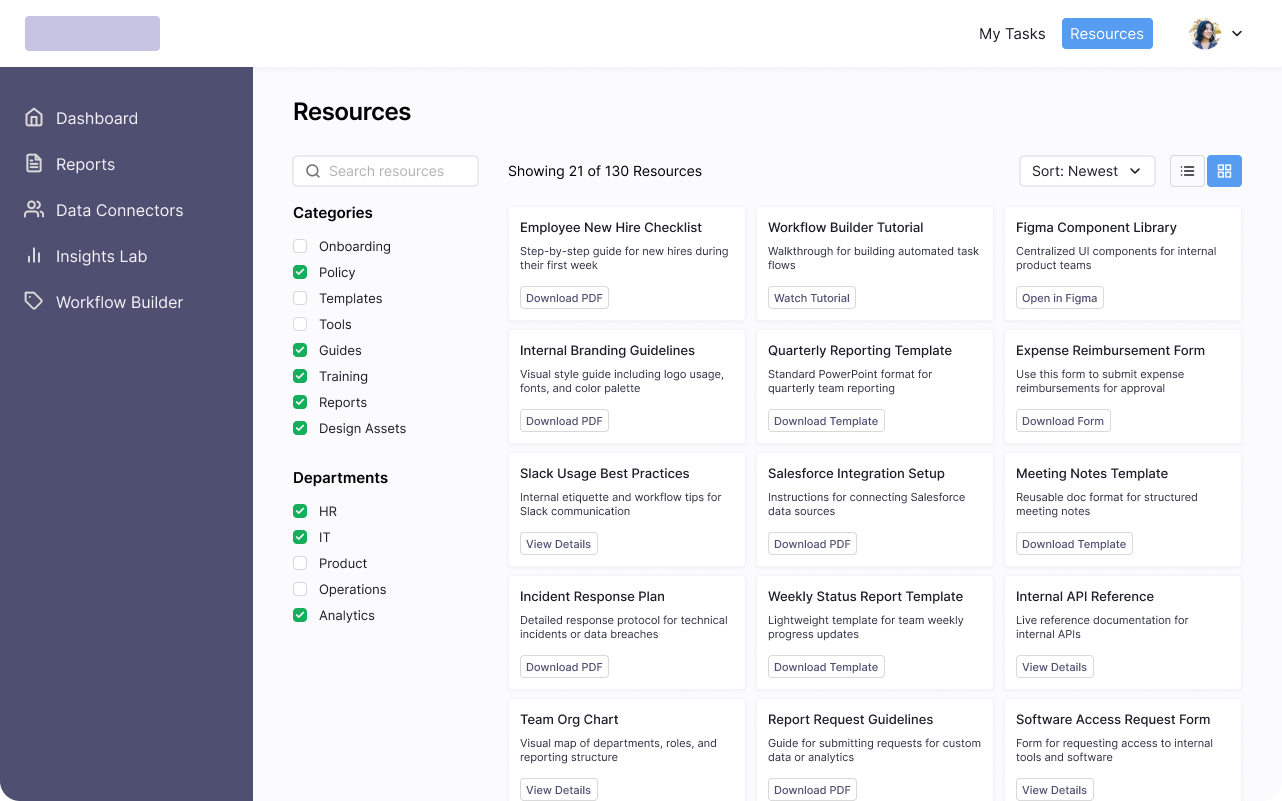Portfolio • UI Prototype • 10-30-25
Nexora Insight Hub
I developed Nexora Insight Hub as a conceptual project to simulate the complexity and polish of an enterprise grade analytics system, showcasing high fidelity, scalable interface design and independent end to end development.

Project Overview
I created Nexora Insight Hub as a personal endeavor to explore how a fictional platform could truly simulate the complexity and polish of an enterprise grade analytics system all without the constraints of real data or a client brief. This project was conceived as a significant design and development challenge, specifically engineered to push my ability to craft high fidelity, scalable interfaces for demanding business environments.
Nexora Insight Hub served as a testbed for tackling nuanced UX challenges, such as balancing dense analytical data with absolute clarity, designing an intuitive experience for multiple hypothetical user roles, and building a realistic product experience from the ground up. Ultimately, it stands as a comprehensive showcase of my capability to independently concept, prototype, and ship a complete, sophisticated interface from end to end.
Challenges
The core challenge for Nexora Insight Hub was to design and develop a compelling, data rich portal experience that felt genuinely enterprise grade, despite being entirely conceptual. This meant meticulously crafting interfaces that could handle the visual weight of extensive analytics without overwhelming the user, demanding a delicate balance between information density and clarity.
Another significant hurdle involved abstracting the complexities of multiple user roles and their associated data views. I had to anticipate how different personas (e.g., executives, data analysts, operational managers) would interact with the platform and design flexible, secure, and clear access points. This required a deep dive into scalable UI architecture that could support diverse user permissions and evolving feature sets.
Process
My process for Nexora Insight Hub was a rigorous exercise in end to end product development. It began with intensive UX ideation in Figma, where I conceptualized the entire analytics ecosystem. I developed detailed user personas and mapped out complex data flows, translating these into wireframes and high-fidelity interactive prototypes. The focus was on defining clear information architecture and designing sophisticated data visualizations that were both informative and aesthetically pleasing.
Moving into development, I built the interface using React for its component based power, allowing me to create reusable and maintainable UI modules for dashboards, reports, and data input. SCSS provided advanced styling capabilities for the high fidelity design, while Bootstrap offered a robust responsive foundation. I focused on structuring the frontend to be highly scalable and maintainable, capable of evolving with potential future data integrations, reflecting an approach typical of real world enterprise applications.
Tech Decisions
The choice of React was pivotal for this project, enabling the creation of a highly modular and dynamic user interface essential for an analytics platform. Its component based nature allowed for independent development and integration of complex data widgets, filters, and navigation elements. Bootstrap provided a rapid prototyping environment and a reliable responsive grid system, crucial for ensuring the dashboard maintained its integrity and usability across various screen sizes.
SCSS was strategically employed for precise styling and thematic consistency across the high fidelity UI. This allowed for robust theming, modular stylesheets, and complex visual effects that elevate the prototype to an "enterprise-grade" aesthetic. The combination of these tools showcased the ability to build a sophisticated, scalable, and visually polished front-end solution capable of simulating real-world application complexity.
Key Takeaways
This project was a profound learning experience in simulating and managing complexity in enterprise level UX/UI design. It significantly advanced my ability to conceptualize, structure, and build data-intensive applications, even in the absence of real data or external constraints. I gained invaluable insight into crafting interfaces that effectively balance information density with clarity, a critical skill for any analytics or business intelligence platform.
Nexora Insight Hub stands as a testament to my capacity for independent, end-to-end product thinking from initial conceptualization and detailed wireframing in Figma to shipping a polished, high fidelity frontend. It demonstrates not just technical proficiency with React, Bootstrap, and SCSS, but also a mature understanding of scalable architecture and user-centric design principles applied to complex business environments.
Quick Details
- Year 2023
- Industry UX Design & Development
- Role UX Engineer
- Category UI Prototype
- Platform CodePen
- Duration 2 Weeks
Technologies Used
Color Palette
Each color was selected to support accessibility, visual hierarchy, and a clean, modern interface.